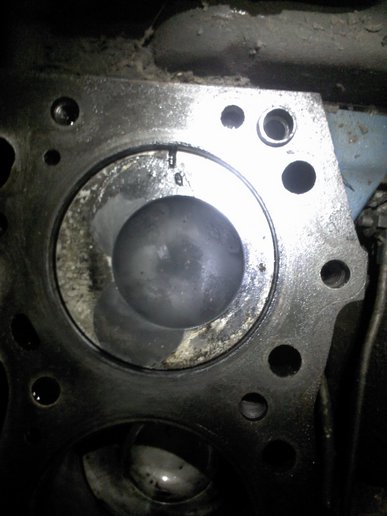poorhunter
Member
Here"s a picture of the piston head with the valve "shadow" marks. I turned the crankshaft back and forth, and it never went above the top of the block...always a mm plus space. This marking can be from something previously wrong? Can it be the valves opening at the wrong time? When I take it in, I"ll ask him about it too.
Here"s another stupid question...the two middle pistons and the two outside pistons run together. I thought each was supposed to be on its own?
Here"s another stupid question...the two middle pistons and the two outside pistons run together. I thought each was supposed to be on its own?


